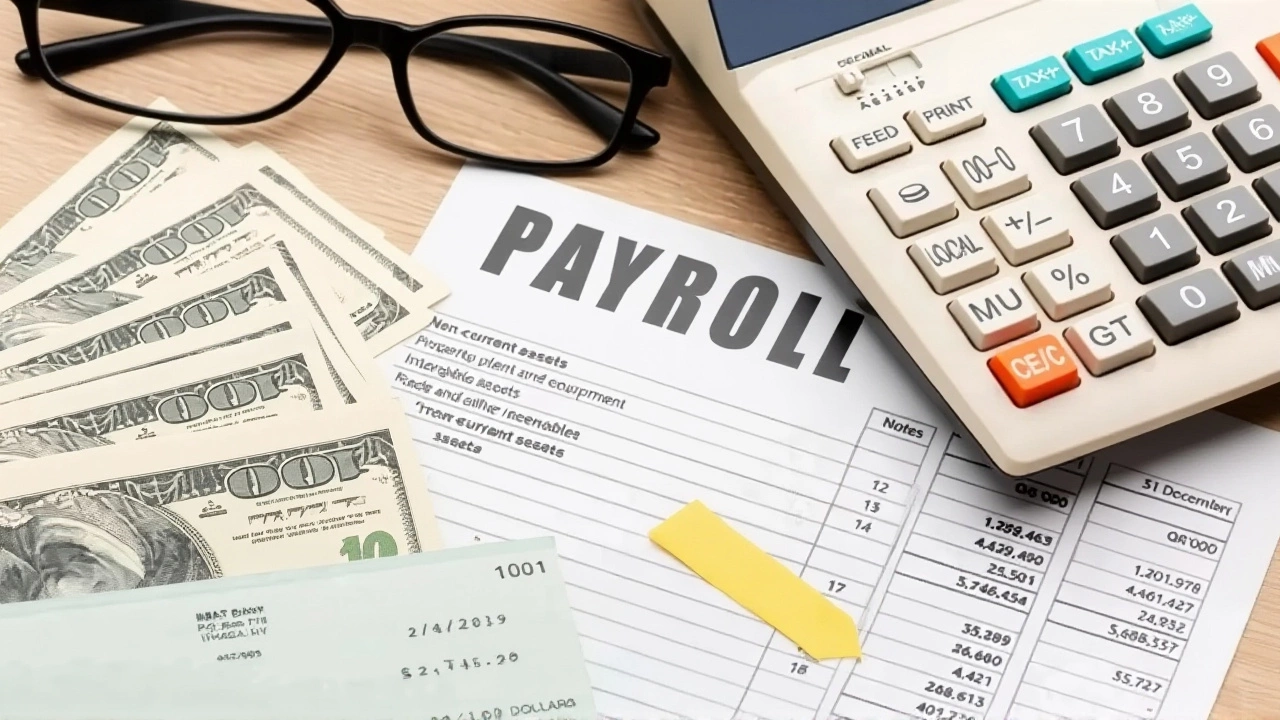The Government of India has officially launched the 8th Central Pay Commission — a landmark move that will reshape salaries, pensions, and allowances for nearly 12 million people across the country. The commission, notified in the Gazette on , marks a historic first: Justice Ranjana Prakash Desai, former Supreme Court judge, is now its chairperson — the first woman ever to lead a Central Pay Commission in India’s 75-year history. With Pankaj Jain, a 1990-batch IAS officer, as Member-Secretary, and Professor Pulak Ghosh of IIM Bengaluru as part-time member, the panel brings together judicial authority, administrative rigor, and tech-driven economic insight. Their mandate? To overhaul pay structures for 5 million central government employees and 6.9 million pensioners — a fiscal earthquake that will ripple through state budgets, corporate hiring, and the national economy.
Why This Commission Matters More Than Ever
This isn’t just another pay review. The last one, the 7th CPC, was implemented in 2016 — nearly a decade ago. Since then, inflation has eroded real wages, digital transformation has changed job roles, and the National Pension System (NPS) has reshaped retirement planning. The 8th Central Pay Commission is being asked to tackle issues no previous panel faced: AI-driven productivity metrics, hybrid work models, and the financial burden of pension liabilities for employees who never joined NPS. The government didn’t just ask for recommendations — it demanded a complete reimagining of compensation. As Ashwini Vaishnaw, Minister of Information and Broadcasting, put it: “We’re not fixing a system. We’re rebuilding it for the next generation.”The Trio Behind the Reform
Justice Desai’s appointment is more than symbolic. During her tenure at the Supreme Court, she authored landmark judgments on public service ethics and fiscal accountability. Her presence signals that this commission won’t shy away from tough questions — like why some allowances still exist decades after their original purpose vanished. Pankaj Jain, currently Secretary in the Ministry of Petroleum and Natural Gas, brings hard-nosed financial discipline. A qualified Cost Accountant with an MBA, he’s spent years managing large-scale budget allocations. He knows how to balance competing demands — energy subsidies versus salaries, for example. Then there’s Professor Ghosh. His expertise in AI and data science isn’t just academic. He’s advised the NITI Aayog on digital governance. He’ll be the one asking: Can performance-based pay be measured through digital dashboards? Should pensioners get inflation-linked payouts calculated by real-time CPI algorithms? This isn’t a panel of bureaucrats. It’s a think tank with teeth.What They’re Tasked With
The Terms of Reference are unusually detailed — six specific mandates that go far beyond salary hikes. They must:- Review all existing allowances — from travel to meal subsidies — and justify each one’s relevance today
- Reassess death-cum-retirement gratuity for both NPS and non-NPS employees — a complex divide affecting millions
- Balance fiscal prudence with fair compensation — no free passes for inflation
- Examine pay structures for defense personnel, All India Services, and other categories — often the most contentious
- Recommend a framework that’s “rational, efficient, and performance-oriented” — code for moving away from seniority-based pay
- Consider how state governments, which mirror central pay scales, will absorb the changes
What’s striking is the flexibility granted: the commission can hire consultants, set its own procedures, and even call in outside experts. That’s rare in India’s bureaucratic culture. It suggests the government knows this isn’t a routine exercise — it’s a systemic reset.
The Fiscal Bombshell
The numbers are staggering. About 11.9 million people — 5 million serving employees and 6.9 million pensioners — will be affected. That’s more than the population of Switzerland. The central government’s personnel expenditure currently stands at over ₹4.5 lakh crore annually. Even a 10% increase would add ₹45,000 crore to the budget — roughly the entire education budget for one year. And here’s the kicker: most state governments automatically align their pay scales with the Centre’s. That means the 8th Central Pay Commission could force states like Uttar Pradesh, Maharashtra, or Tamil Nadu to find billions in extra funds — or cut other services. No wonder Finance Minister Nirmala Sitharaman called this “the most consequential fiscal decision of the decade.”Timeline and Implementation
The commission has 18 months to deliver its final report — meaning a deadline of . But here’s the twist: implementation may start as early as , if the interim report is approved. That’s unusual. Most commissions wait for the final report. The government wants to give employees some relief quickly — especially those still on pre-NPS pensions, which are often underfunded. But the final date? That’s still up in the air. “We’ll decide after the interim report,” Vaishnaw said. That’s political cover — and smart. If inflation spikes or revenue falls, they can delay the full rollout.What Comes Next
Expect protests from employee unions — especially if performance-based pay gains traction. Expect state governments to start lobbying for fiscal compensation. Expect private sector HR departments to watch closely — if government pay rises, private firms will feel pressure to match. And expect tech startups to pitch AI tools to the commission: algorithms to predict optimal pay bands, sentiment analysis of employee feedback, even blockchain-based pension tracking. This isn’t just about money. It’s about how India defines public service in the 21st century.Frequently Asked Questions
Why is Justice Ranjana Prakash Desai’s appointment historic?
Justice Desai is the first woman to chair any Central Pay Commission since its inception in 1947. Previous chairs were senior bureaucrats or retired military officers. Her judicial background brings a focus on legal accountability and equity — a shift from purely financial reviews. Her presence signals that pay reform will be scrutinized not just for cost, but for fairness under constitutional principles.
How will the 8th CPC affect pensioners not under the National Pension System?
Approximately 3.2 million pensioners are still on the old defined-benefit system, which guarantees fixed pensions based on last drawn salary. The 8th CPC is specifically tasked with reviewing their death-cum-retirement gratuity — a lump sum paid upon death or retirement. Many of these pensions are underfunded. The commission may recommend transitioning them to hybrid models or adjusting gratuity calculations to reflect inflation and longevity — a move that could cost billions but prevent future fiscal crises.
What role will Professor Pulak Ghosh play in the commission?
As an expert in AI and data science, Ghosh will lead the review of how digital tools can modernize pay structures. He may propose using real-time productivity metrics, AI-driven job grading, or predictive analytics to determine allowances. For instance, should a clerk in a remote district get a higher hardship allowance if their digital access is poor? His input could turn pay reform from a static formula into a dynamic, data-driven system.
Will state governments be forced to implement the 8th CPC’s recommendations?
No — but they almost always follow the Centre’s lead. Over 90% of state employees’ pay scales mirror central pay commissions. If the 8th CPC recommends a 20% raise, states will either absorb the cost, raise taxes, or cut other spending. Several states have already begun fiscal modeling. Bihar and West Bengal have warned they may seek central assistance if pay hikes strain their budgets — making this not just a central issue, but a federal one.
Why is the commission allowed to appoint outside experts?
Past commissions relied solely on internal bureaucrats, leading to outdated, insular recommendations. This time, the government wants fresh thinking. Experts in public finance, behavioral economics, and digital governance may be brought in — possibly from institutions like NIPFP, NSE, or even global bodies like the World Bank. This openness suggests the commission aims to be transparent, credible, and globally informed — not just another bureaucratic exercise.
What happens if the commission’s recommendations are too expensive?
The government has explicitly instructed the commission to balance fairness with fiscal prudence. If the proposed hike exceeds 15% of the current personnel budget, the report may include phased implementation — perhaps 5% in 2026, 7% in 2027, and the rest later. The interim report will be critical: if it shows the economy can’t bear a full hike, the government may delay or scale back. This isn’t about giving raises — it’s about sustainable governance.




